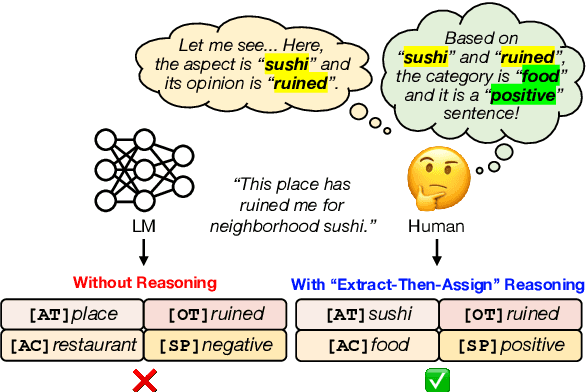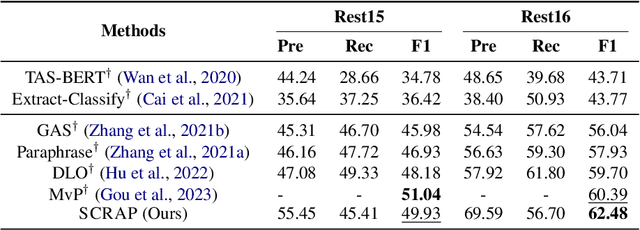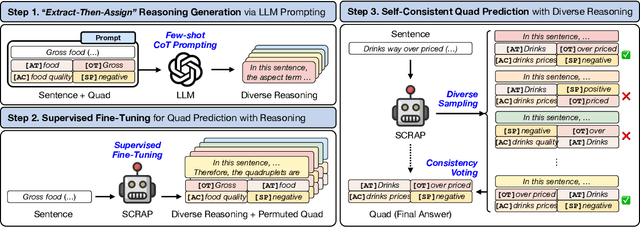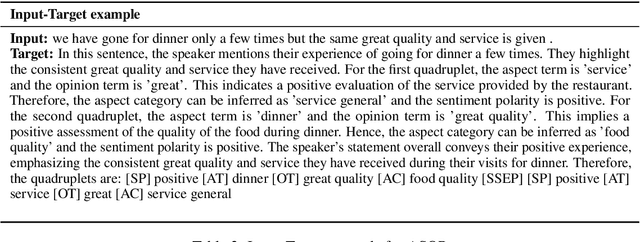Yongsik Seo
Make Compound Sentences Simple to Analyze: Learning to Split Sentences for Aspect-based Sentiment Analysis
Oct 03, 2024Abstract:In the domain of Aspect-Based Sentiment Analysis (ABSA), generative methods have shown promising results and achieved substantial advancements. However, despite these advancements, the tasks of extracting sentiment quadruplets, which capture the nuanced sentiment expressions within a sentence, remain significant challenges. In particular, compound sentences can potentially contain multiple quadruplets, making the extraction task increasingly difficult as sentence complexity grows. To address this issue, we are focusing on simplifying sentence structures to facilitate the easier recognition of these elements and crafting a model that integrates seamlessly with various ABSA tasks. In this paper, we propose Aspect Term Oriented Sentence Splitter (ATOSS), which simplifies compound sentence into simpler and clearer forms, thereby clarifying their structure and intent. As a plug-and-play module, this approach retains the parameters of the ABSA model while making it easier to identify essential intent within input sentences. Extensive experimental results show that utilizing ATOSS outperforms existing methods in both ASQP and ACOS tasks, which are the primary tasks for extracting sentiment quadruplets.
Self-Consistent Reasoning-based Aspect-Sentiment Quad Prediction with Extract-Then-Assign Strategy
Mar 01, 2024



Abstract:In the task of aspect sentiment quad prediction (ASQP), generative methods for predicting sentiment quads have shown promising results. However, they still suffer from imprecise predictions and limited interpretability, caused by data scarcity and inadequate modeling of the quadruplet composition process. In this paper, we propose Self-Consistent Reasoning-based Aspect-sentiment quadruple Prediction (SCRAP), optimizing its model to generate reasonings and the corresponding sentiment quadruplets in sequence. SCRAP adopts the Extract-Then-Assign reasoning strategy, which closely mimics human cognition. In the end, SCRAP significantly improves the model's ability to handle complex reasoning tasks and correctly predict quadruplets through consistency voting, resulting in enhanced interpretability and accuracy in ASQP.
 Add to Chrome
Add to Chrome Add to Firefox
Add to Firefox Add to Edge
Add to Edge